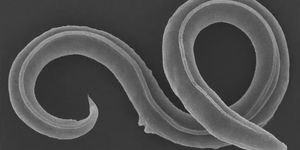It's estimated that as many as one-third of Americans suffer from chronic pain, and many medications that have been developed to treat pain pose serious risks. Scientists have now created a gene therapy that can manipulate a specific channel that sodium ions move through, called NaV1.7. In tests using cells in culture and animal models, this approach successfully relieved chronic pain. The work has been reported in the Proceedings of the National Academy of Sciences (PNAS).
“Our study represents a major step forward in understanding the underlying biology of the NaV1.7 sodium ion channel, which can be harnessed to provide relief from chronic pain,” said senior study author Rajesh Khanna, director of the NYU Pain Research Center and professor of molecular pathobiology at NYU Dentistry.
Sodium ion channels facilitate the communication between neurons, so they are important to the transmission of pain signals. Previous work showed that NaV1.7 plays a role in some rare pain disorders. Mutations in the NaV1.7 gene can cause abnormally high levels of sodium to move into cells, which causes intense, chronic pain. People can also carry mutations in which NaV1.7 is dysfunctional, and they do not feel pain.
In this study, Khanna and colleagues opted to regulate NaV1.7 with another protein called CRMP2, because many previous efforts to block NaV1.7 have been unsuccessful.
CRMP2 can modulate the activity of NaV1.7, and this controls the amount of sodium moving into the channel. When the interaction between Nav1.7 and CRMP2 is disrupted, less sodium moves through the channel, tamping down neuronal activity, and reducing pain, explained Khanna.
The researchers determined that the binding site that connects NaV1.7 and CRMP2 is very specific, and could be targeted. If this part of NaV1.7 was removed, CRMP2 stopped regulating the NaV1.7 channel, Khanna added. With a viral vector that moves things into cells, the investigators developed a peptide that can inhibit that specific part of NaV1.7.
When this peptide was used on mouse models of chronic pain, such as the pain that is caused by chemotherapy, the pain was relieved after about a week. The findings were also replicated in other rodent models and in human and primate cells. More research will be needed before this peptide is used in the clinic, but these initial results are promising.
“There is a significant need for new pain treatments, including for cancer patients with chemotherapy-induced neuropathy. Our long-term goal is to develop a gene therapy that patients could receive to better treat these painful conditions and improve their quality of life,” said Khanna.
Sources: New York University, Proceedings of the National Academy of Sciences (PNAS)









